The experience of community members in Thiès-Nord, an urban, flood-prone, area in Senegal where Practical Action works as part of the Zurich Flood Resilience Alliance, makes a strong case for investing in flood resilience.
It’s hard to learn in a flooded school
At Petit Thialy Primary School, local volunteers are digging trenches and filling in the ground with grit and dirt. “It is getting worse every year”, says Marie-Jeanne, a teacher at the school, referring to floods, “but this year was the most difficult”.
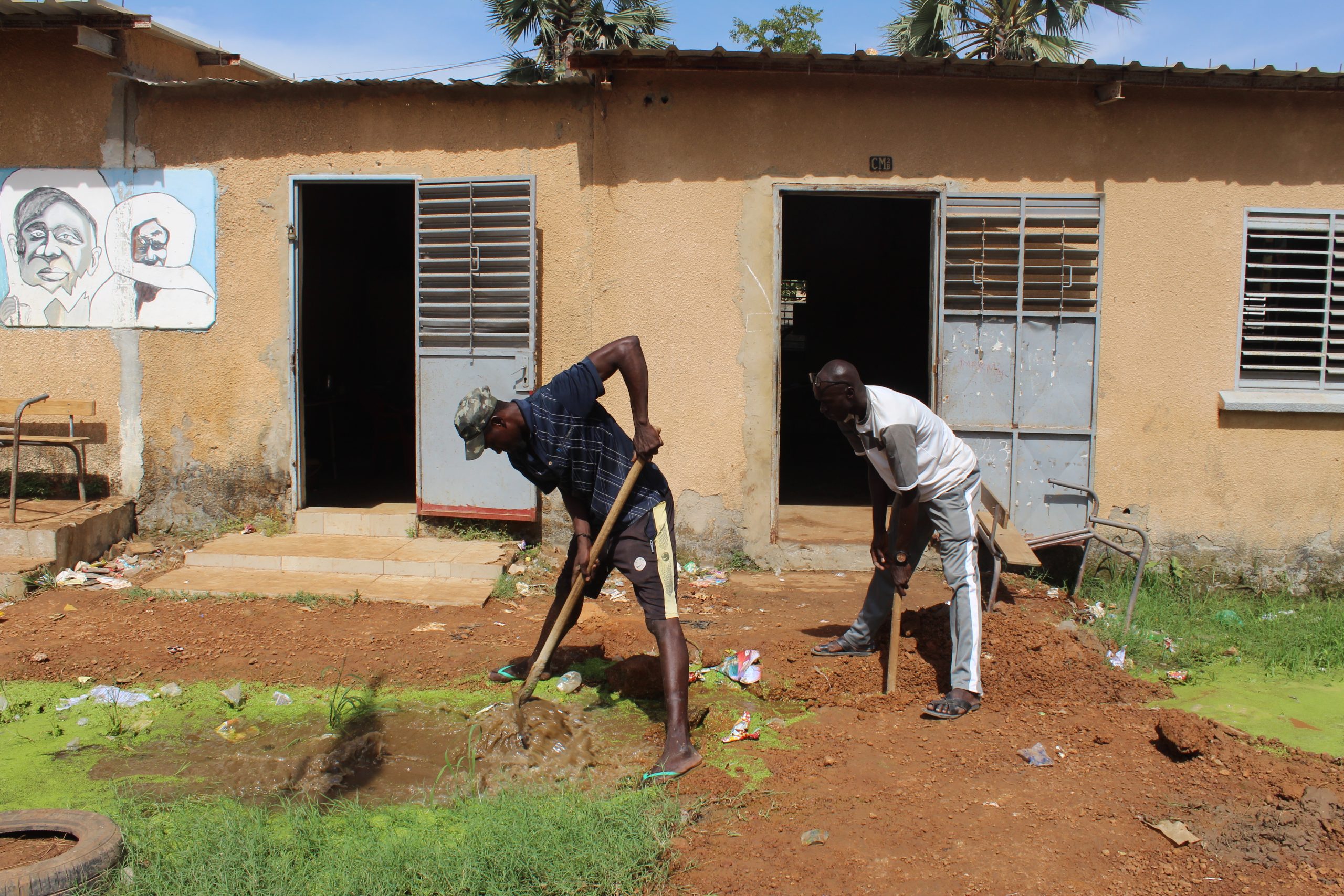
The school has been flooded since September 2021, meaning the academic year started 15 days late. And the situation was still bad in November.
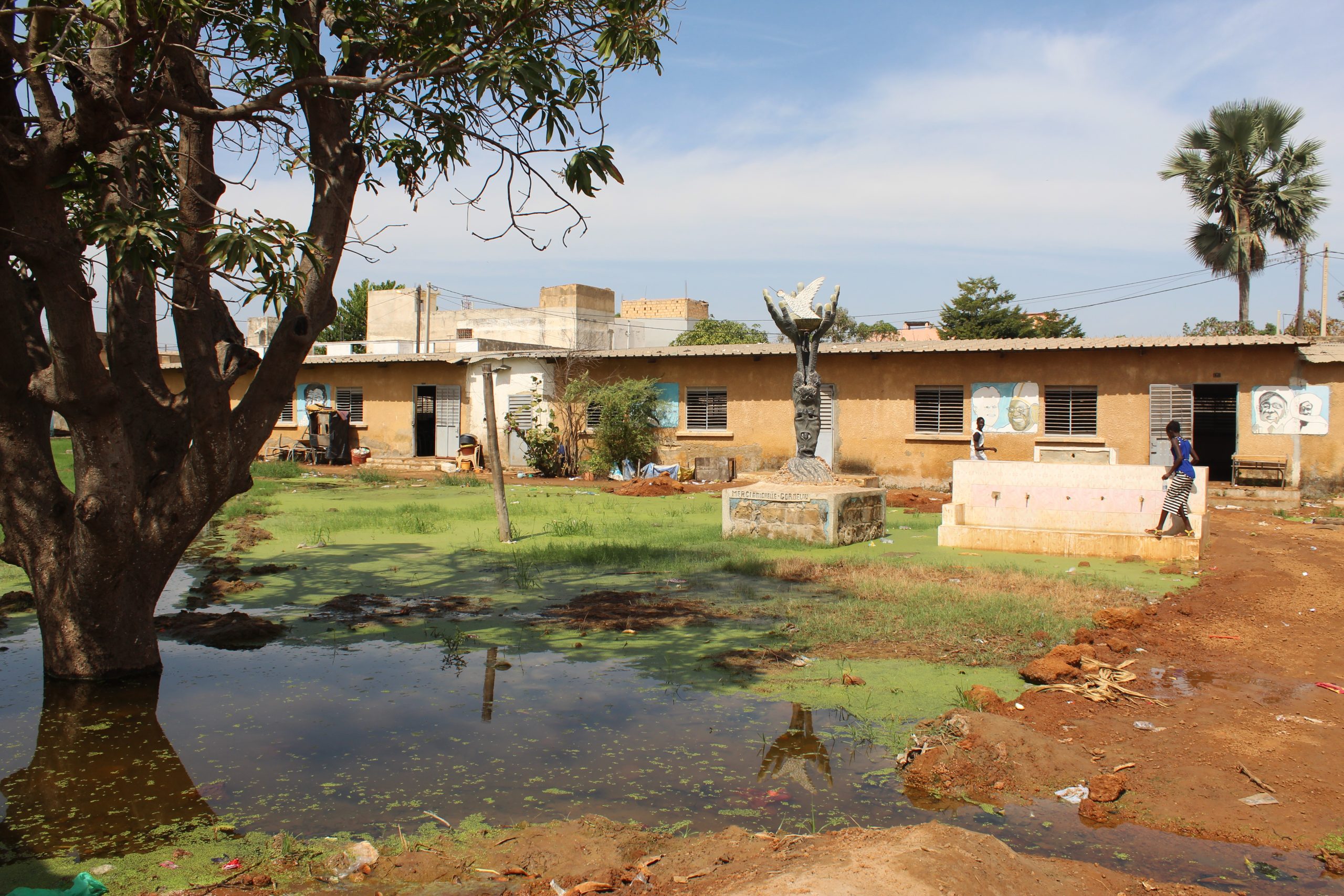
The children and staff cannot access the toilet facilities due to flood water, instead having to “fend for themselves”. The water taps are out of reach for the smallest children and the staff struggle to keep the children out of the flood water at break times. Sometimes children looking to avoid the waterlogged yard leave the school grounds during breaks resulting in safeguarding concerns.
These challenges have negative effects on children’s health as well as their education. Besides illness and absence, it’s hard to truly thrive in a flooded school.
A community coming together to support their school
The community refuses to sit idle while their children’s education is at risk.
Marie-Jeanne along with other teachers and parents like Alioune Diop and Djibril Mbengue have set up a committee to manage the floodwater. Many community members have, at some point, “left their work to come and help here so that our children can go to school. The local football team came with concrete and gravel,” Djibril told me.
Trying to mitigate the negative impacts on the student’s education, the school is running additional classes to help them catch up.
The committee can’t see any long-term solution other than relocating the school, but some members are reluctant to consider this during the academic year. They realise the financial and logistical demands that relocating this 12-class school would involve. Other solutions the committee has discussed include pipes to drain the water and, as a short-term solution, simply filling in the flooded areas. “We are ready for any helping hand,” says Alioune.
The importance of psychological resilience
The strength and perseverance of the people in this neighbourhood was evident.
Even though the Flood Resilience Measurement for Communities (FRMC) approach that Zurich Flood Resilience Alliance members use to understand and enhance resilience together with flood prone communities like those in Thiès-Nord, does not currently measure psychological resilience this is an important factor for how people cope with floods.
Psychological resilience refers to people’s attitudes and perceptions of their own resilience and capacities, which can have a significant impact on their ability to cope and recover.
During a review of the FRMC conducted by resilience experts in 2020 it was suggested that a high level of subjective resilience is usually associated with a lower likelihood of engaging with detrimental coping strategies and an ability to engage in more adaptive or transformative responses.
The next blog about our work in Thiès-Nord will look at what the comprehensive flood measurement tool and methodology can and does currently measure and why it matters.
Our families are in danger. The school is a problem but it is not the only problem, we have forgotten the floods that happened on the streets. All the attention is on the school, but the streets are also still flooded.
– Community member during results discussion
A complex flood risk profile in Thiès-Nord
This neighbourhood in Thiès-Nord faces three challenges which results in high flood risk. This is one of the lowest lying areas of the city, receiving substantial surface flows from the high plateau in the east of Thiès. Another serious challenge is the neighbourhood’s proximity to a high water table, meaning the level where the soil underneath is completely saturated by water. These challenges are exacerbated by increasing intensity of rainfall due to our warming climate.
The streets outside the school are also flooded, with stagnant surface water remaining long after the floods subside. The water is mixed with plastic waste and other debris which often exacerbates flooding in other communities in the area.
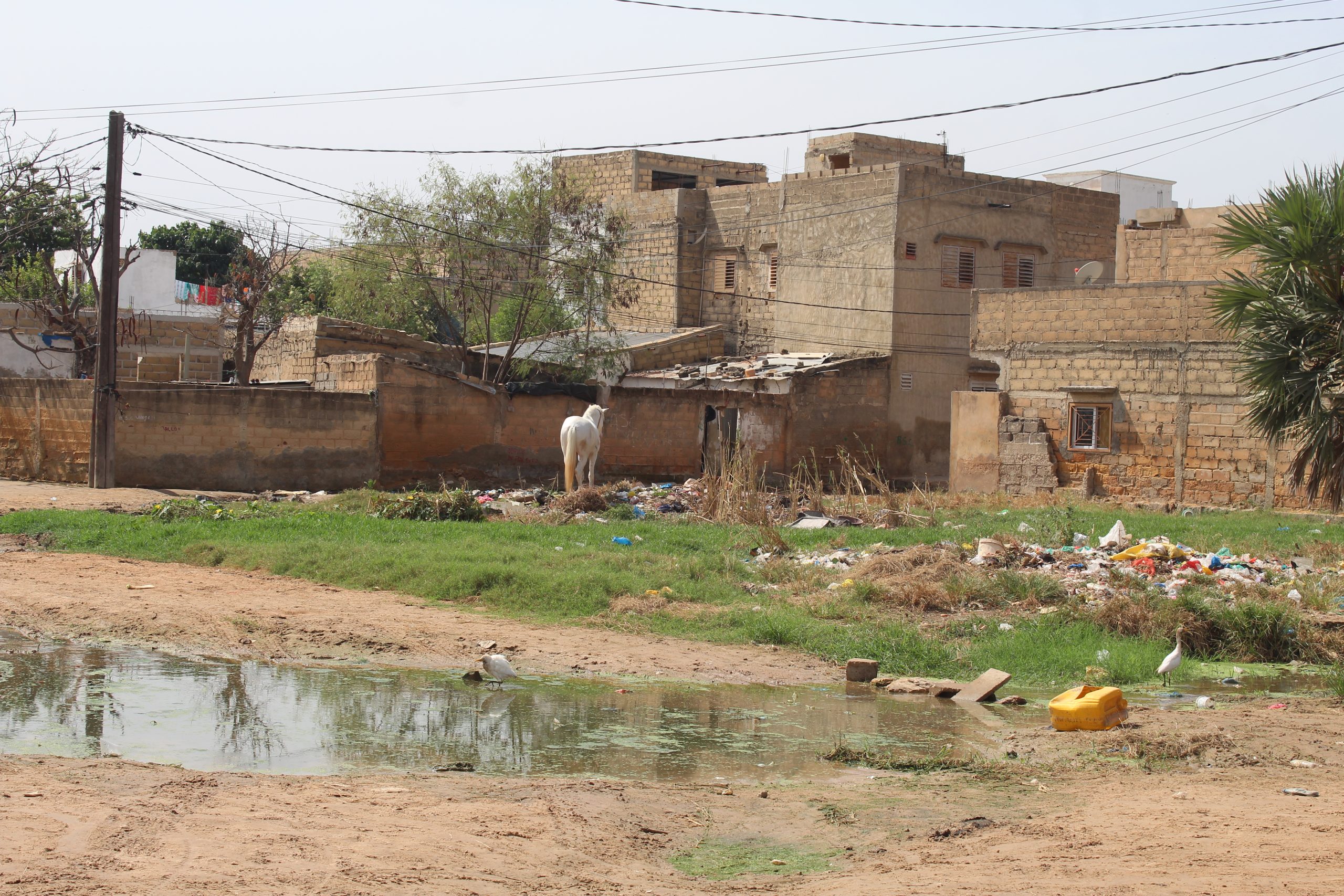
Two consequences of these challenges, which are visible throughout this community, are standing water and septic system failure. Both can result in poor health outcomes, such as mosquito-borne disease or the spread of otherwise easily preventable infections.
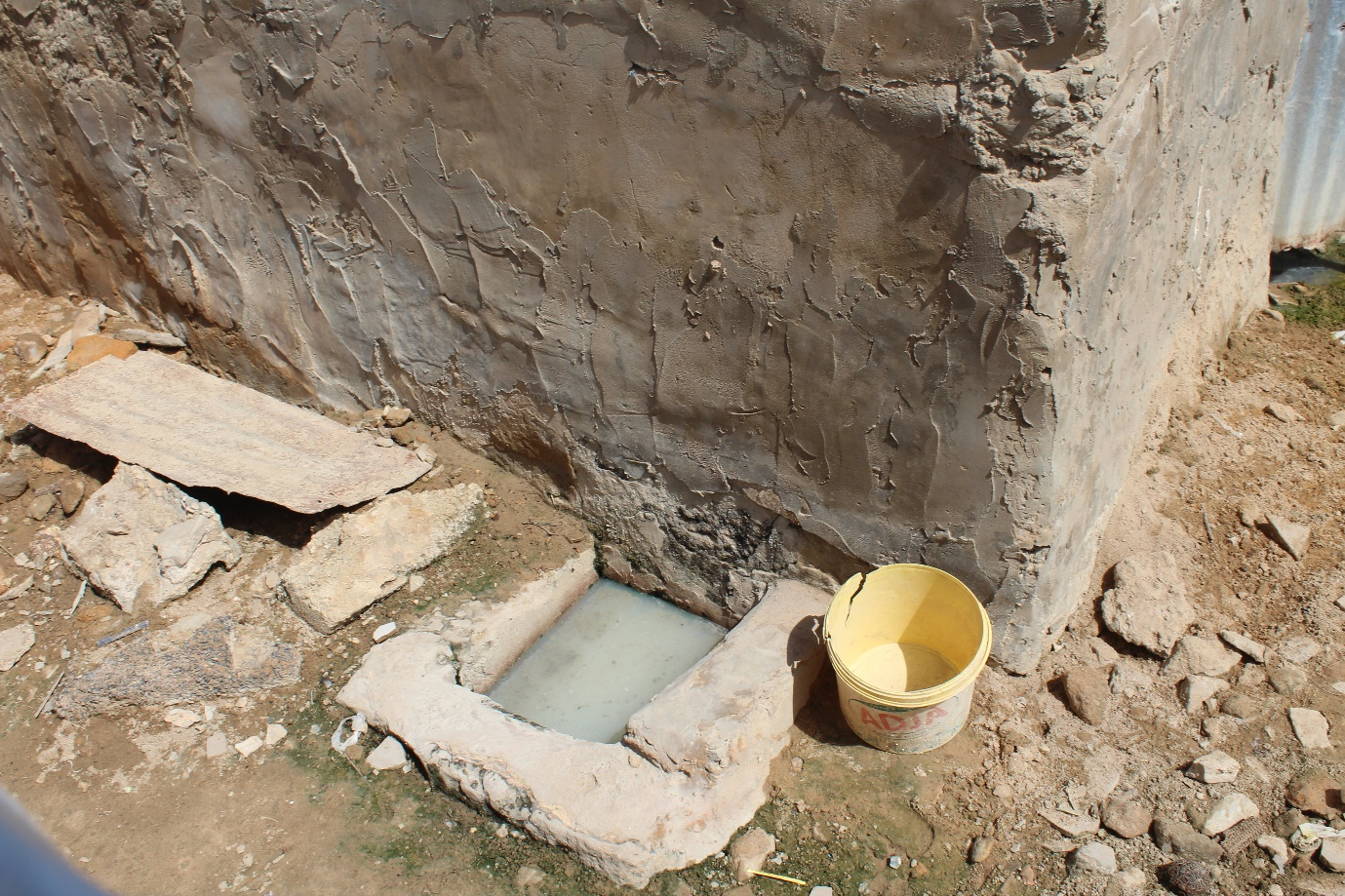
“I can’t relocate, I only have here”
“I have been affected by flooding every year for ten years now,” says Ndèye who lives in the adjacent community of Thialy. Ndèye lives by a large area of grass which is constantly waterlogged and where people must use a makeshift path of tyres to cross.

On one side, the houses are abandoned due to past floods. On the other is the local health clinic – suffering access issues during flooding.
“I can’t relocate. I only have here. If I had the means I would fill in the area or even raise the building,” said Ndèye.
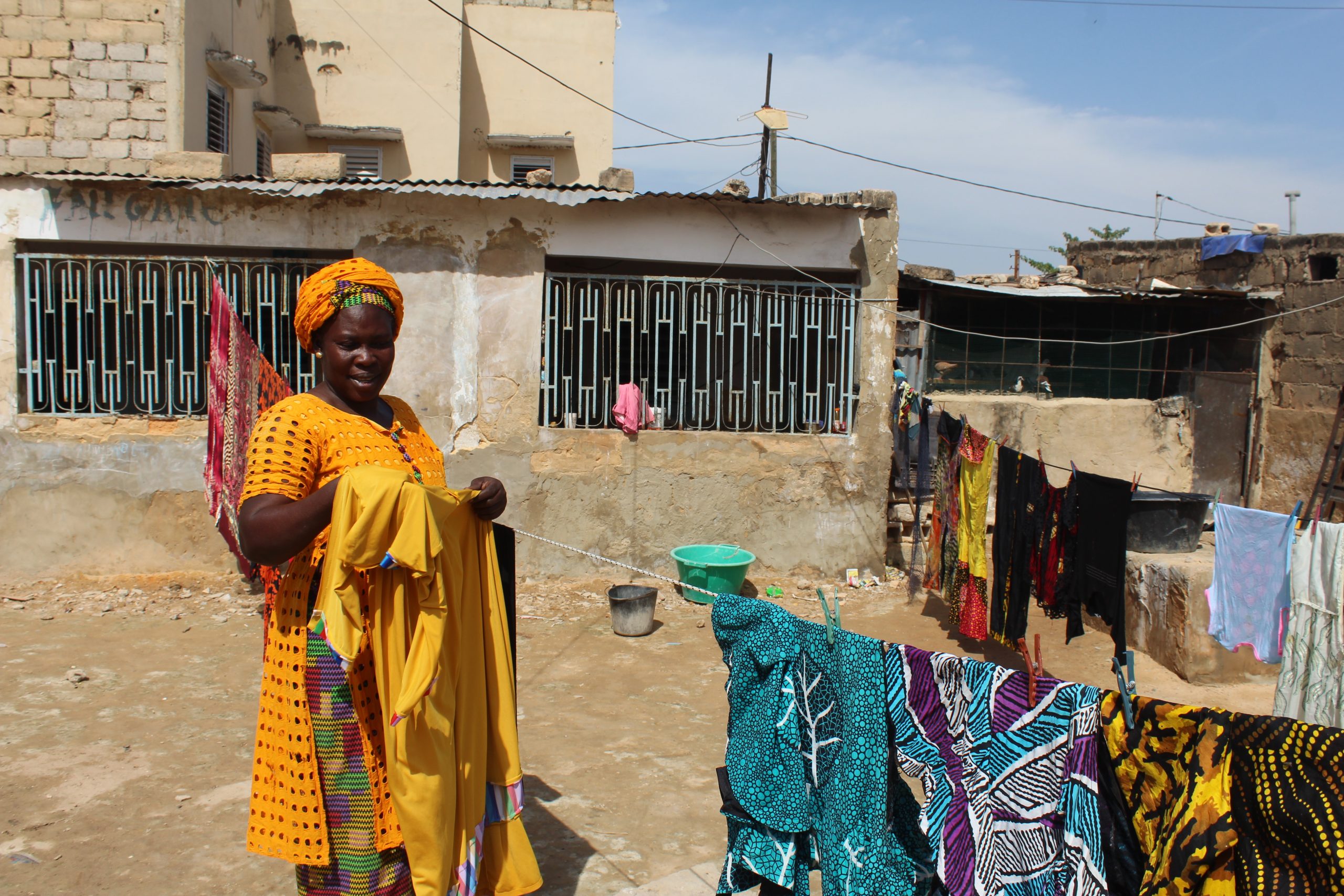
Ndèye showed us her flooded toilet and water tank. She explained, “during the rainy season my yard is full of water. I cannot drain it. I work as a trader at the market so during the flood I have to get up really early to empty the water.”
The people in this area are suffering. Local services have visited the area to find some solutions like filling in, but these are short term solutions. The local community is trying to think about long term solutions.
– Community member during results discussion
Opportunity to learn from Thiès floods in 2020
The region of Thiès was impacted by a severe flood event in 2020. 16 neighbourhoods were flooded, affecting nearly 8,500 people, damaging 85 houses and injuring eight individuals.
Although the rainfall in Thiès (about 126.9 mm in 24 hours) was well above the critical threshold of 75 mm — which corresponds to “intense rainfall” — flooding is not a new risk for the region. Given climate change and its consequences, extreme weather events such as this will likely become the norm.
The Practical Action team, in partnership with ISET-international, have conducted a Post-Event Review Capability (PERC) which will be published in the coming months. The PERC is a systematic framework for the analysis of a disaster event, focusing on how a specific hazard event became a disaster, and how future disasters can be avoided. This policy brief presents recommendations for strengthening the Early Warning Systems.
It is clear that we need to invest more in flood resilience to support people in communities like these. We already have the tools and solutions – stay tuned for second part of this blog series where I’ll reflect on why we measure flood resilience, how Practical Action are doing it and what it can mean for places like Thiès and its people.

Comments